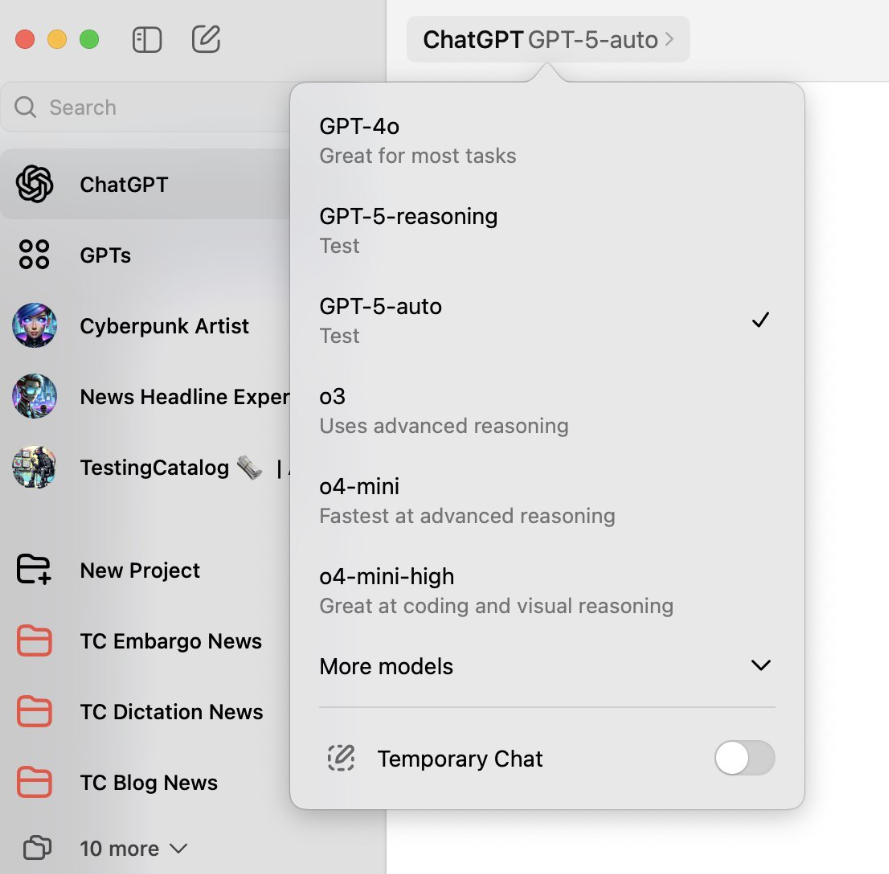The tech community has discovered two new models, GPT-5-Auto and GPT-5-Reasoning, possibly being tested by OpenAI in the Mac client, sparking widespread discussion. Although OpenAI has not officially released any information about GPT-5, these findings suggest that its next-generation AI model may have entered an internal testing phase, and is expected to bring stronger autonomy and reasoning capabilities.

New Clues in the Mac Client
According to discussions on online technical forums and social media, some developers found code snippets related to GPT-5-Auto and GPT-5-Reasoning in OpenAI's Mac client (ChatGPT Agent app). A configuration record named "gpt-5-reasoning-alpha-2025-07-13" shows that the model settings include "reasoning_effort: high," indicating that this model focuses on intensive reasoning tasks. Additionally, the name "GPT-5-Auto" suggests it could be an automated agent with the ability to perform tasks autonomously.

These clues align with recent statements from OpenAI CEO Sam Altman, who mentioned that GPT-5 will integrate the multimodal capabilities of the GPT series with the reasoning abilities of the o series, aiming to create a unified and efficient AI system. The discovery in the Mac client further supports the idea that OpenAI is accelerating the development of GPT-5, with an expected release as early as summer 2025.
GPT-5-Reasoning: A Leap in Reasoning Capabilities
GPT-5-Reasoning is considered a technological continuation of OpenAI's o series reasoning models (such as o1, o3), focusing on logical decomposition and multi-step reasoning for complex tasks. According to leaked information, the model performs well in code debugging, mathematical problem-solving, and cross-domain analysis, particularly outperforming GPT-4o and o3-mini in benchmark tests such as AIME2024/2025 and Codeforces, with a reduction in error rate of about 20%.
Its core innovation lies in the "dynamic reasoning allocation" mechanism, which adjusts computing resources based on task complexity. For example, simple queries can be responded to quickly, while complex problems are handled through chain-of-thought (CoT) reasoning to ensure high accuracy. This capability gives it a significant advantage in scenarios such as software engineering, scientific research, and strategic decision-making. For instance, GPT-5-Reasoning can efficiently handle tasks like "extracting specific functions from a complex codebase" or "analyzing multiple data sources to generate a business report."
GPT-5-Auto’s name evokes Auto-GPT and other autonomous AI frameworks, suggesting it could be a highly automated agent that minimizes user intervention. Combined with OpenAI’s technical roadmap, GPT-5-Auto is expected to integrate with external services (such as calendars, emails, and browsers) to perform multi-step tasks. For example, a user could simply input "plan a trip to Europe for me," and GPT-5-Auto would automatically search for flights, book hotels, and generate a travel itinerary.
Different from existing Auto-GPT, GPT-5-Auto is expected to feature a larger context window (rumored to be up to 1 million tokens), significantly improving long-text processing and context memory capabilities. This will make it more stable when handling long conversations or large-scale data, avoiding performance degradation caused by context loss in traditional models.
